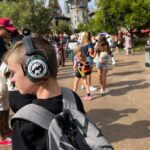Purposeful Motor Skills
Purposeful motor refers to the ability to perform intentional and coordinated movements with a specific goal in mind. Purposeful motor skills are foundational for a child’s holistic development, impacting their physical, cognitive, social and emotional growth. In children with autism, these skills may be delayed or impaired.
Purposeful motor skills include activities such as grasping objects, manipulating toys, using utensils, and engaging in household or play activities that require fine and gross motor coordination.
Why are purposeful motor skills important?
- Physical Development – Builds strength, coordination, and dexterity.
- Cognitive Development – Enhances attention, problem-solving, and planning.
- Social and Emotional Development – Encourages social interaction, teamwork, confidence, and self-esteem.
- Independence – Enables self-reliance in daily activities.
- Academic Readiness – Prepares for tasks like writing, drawing, and using scissors.
- Sensory Integration – Integrates sensory inputs for effective interaction with the environment.
What is the Brain Body disconnect?
The brain-body disconnect refers to the challenges they kids may experience in coordinating their thoughts and intentions with their physical movements. It is a complex interaction between the brains motor planning and execution systems which can result in difficulties with motor skills, speech production, and overall coordination.
In autism, the brain-body disconnect is often associated with difficulties in sensory processing and integration. Children with autism may have atypical sensory experiences, such as being hypo or hypersensitive to sensory stimuli. This can affect their ability to perceive and interpret sensory information accurately, leading to challenges in coordinating movements and speech. This is different from apraxia because it is a motor planning disorder that affects the ability to plan and execute purposeful movements. Children with apraxia may struggle with coordinating precise movements required for speech production, making it difficult for them to produce sounds, form words and communicate effectively.
When autism and apraxia coexist, the brain-body disconnect can be further compounded. The challenges in sensory processing and motor planning can make it even more difficult for children to coordinate their thoughts and intention with their physical actions, leading to delays or difficulties in speech and motor development skills.
It’s important to note that each child is unique, and the severity and manifestation of the brain-body disconnect can vary. Understanding and addressing this disconnect requires a comprehensive approach that may include therapist such as speech therapy, occupational therapy and sensory integration therapy. These therapies can aim to improve motor planning, sensory integration, and overall coordination, helping children with autism and apraxia bridge the gap between their thoughts and physical actions.
- Sensitivity to Noise and Light: Does your child cover their ears, close one eye or squint frequently?
- Textural Aversions: Are shoes “too tight”, tags or logos on clothes are “annoying” or “too irritating” for them?
- Motor Skill Difficulties: Do they trip often, struggle with stairs, have difficulty executive something on command or have trouble with fine motor tasks?
What is Apraxia?
Apraxia is a neurological condition that affects a person’s ability to plan and execute purposeful movements. It is different from weakness or paralysis as it is primarily affecting the coordination and sequencing of movements rather than the muscles themselves. When you have apraxia, it presents as being consistently inconsistent.
Examples of Apraxia:
- Difficulty planning and executing the steps required to complete a task.
- Trouble with precise movements of the hands and fingers affecting tasks such as writing, buttoning or using utensils.
- Challenges in translating the planned movements into actual actions.
- Difficulties in planning and executing purposeful movements of the arm and legs
- Difficulty in using tools or objects to build or create, such as stacking blocks or using scissors.
- Problems generating ideas for actions or knowing how to initiate a task.
How can apraxia be improved/Can apraxia be treated?
Consult a Speech or Occupational therapist. You need to find a therapist who is skilled in apraxia therapy. Not all therapists have extra training in this area. They can provide assessment, therapy and guidance tailored to your child’s special needs. They are the difference makers in your care plan!
Here are some helpful tips!
- Practice regularly – Consistency is the key. Engage in frequent and structured practice sessions in OT/ST sessions or at home with your child. Intense and repetitive practice is recommended to strengthen neural pathways and promote motor learning.
- Break task down into small more manageable steps – This approach can help your child gradually build their motor planning abilities.
- Use visual supports – Visual aids such as pictures, diagrams or written instructions, can assist in teaching, reinforcing motor sequences. Visual supports provide additional cues and support for understanding and competing a task.
- Provide Multisensory input- Incorporate multiple senses (visual, auditory, tactile) to enhance learning and motor planning. For example, use gestures, verbal cues, and physical guidance while teaching new skills
- Create an environment that supports your child’s communication and motor development – Minimize distractions, provide clear instructions and offer positive reinforcement for their efforts.
- Involve caregivers and family – Educate and involve family members and caregivers in therapy strategies. Consistency across different environments and individuals can help reinforce progress.
Explore More From Related Topics

Purposeful Motor Skills
Purposeful motor skills are intentional and goal-directed movements that enable individuals to interact effectively with their environment.

Sensory Processing
Sensory processing refers to how our nervous system receives and interprets information from the environment through our senses and how we respond to that information.

Self-Regulation
Self-Regulation is important for kids to manage emotions, focus, make good choices, and develop resilence.

Interoception
Interoception is the perception and awareness of internal bodily sensations such as pain, sleep, toileting, body temperature, hunger and thirst cues.
